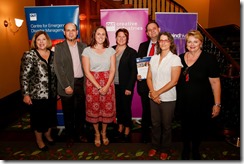The final paper in this final session of Social Media & Society 2018 is Sonya Sachdeva, whose interest is in the role of social media in discussing the smoke from wildfires. Wildfires themselves have become more prevalent and more intense around the world, as a result of climate change, and the smoke from such fires can affect far larger areas than the fires themselves. Some two thirds of the United States are affected by the smoke from wildfires, even if they are nowhere near forests and firezones.
If accurate assessments of air quality are unavailable due to gaps in monitoring …













